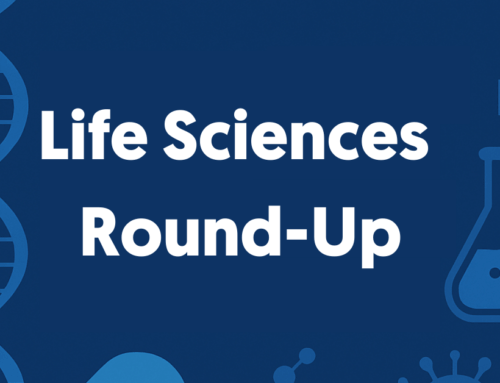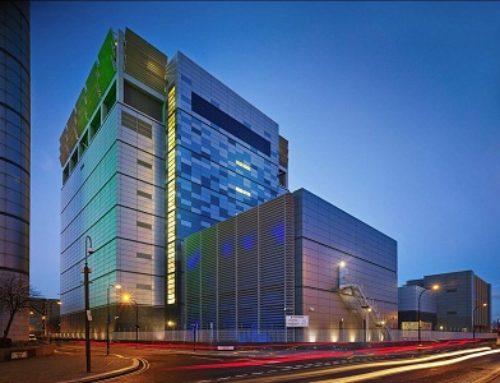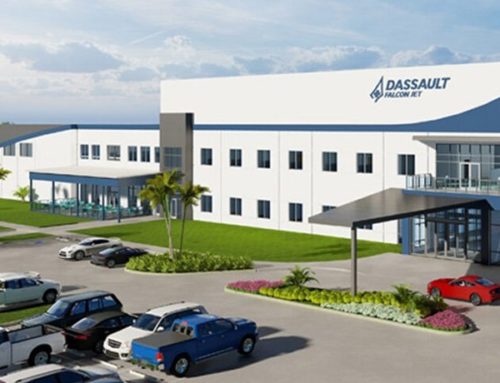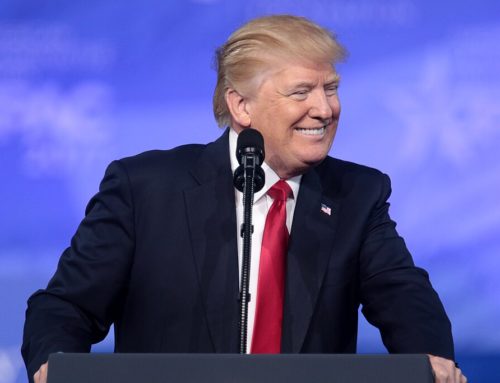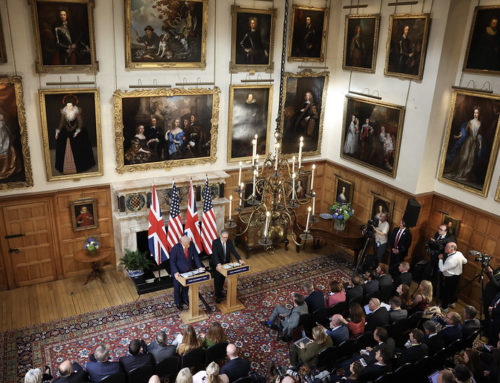1. Salesforce to invest $1B in Mexico as AI hub
In a bold move that underscores Mexico’s rising status as a technology and services powerhouse, Salesforce has announced a $1 billion investment over the next five years to expand its operations and accelerate artificial intelligence adoption across Latin America.
The investment will fund the development of a new five-story headquarters in Mexico City’s Polanco district and the establishment of a Global Delivery Center. This center will provide multilingual consulting services in Spanish, English, and Portuguese, supporting clients throughout the Americas and reinforcing Mexico’s role as a strategic hub for AI-powered enterprise solutions.
Driving the Agentic Enterprise Vision
At the heart of Salesforce’s expansion is its vision of the Agentic Enterprise — a model where human employees collaborate with autonomous AI agents to enhance productivity, customer service, and operational efficiency. The company’s AI agent platform, Agentforce, launched commercially in 2024, is central to this transformation. It enables businesses to automate tasks and streamline workflows, helping them adapt to the rapidly evolving digital landscape.
Marc Benioff, Chair and CEO of Salesforce, emphasised the strategic importance of the move:
“Mexico is home to some of the world’s most innovative companies and is becoming an important hub for enterprises embracing the agentic future. This $1 billion investment is a commitment to Mexico as a key market for AI-powered growth.”
Talent Development and Economic Impact
Beyond infrastructure, Salesforce is investing in workforce development, including a $250,000 grant to Amigos de Filantrofilia, a nonprofit organisation that will train 100,000 Mexican students in AI skills. This initiative aims to cultivate a new generation of AI-literate professionals, further strengthening Mexico’s tech talent pipeline.
Mexico’s Secretary of Economy, Marcelo Ebrard, welcomed the announcement, stating:
“Salesforce’s commitment highlights the strength of our economy and the exceptional talent we have. This investment will create jobs, build AI skills, and position Mexico as a consultancy hub for Latin America.”
Strategic Implications for Trade and Investment
Salesforce’s expansion aligns with a broader trend of global tech firms investing in Mexico, drawn by its proximity to the U.S., competitive labor market, and growing digital infrastructure. Microsoft, for example, recently pledged $1.3 billion to build cloud and AI capabilities in the country.
For international businesses and investors, Salesforce’s move signals confidence in Mexico’s stability, talent, and potential as a regional innovation center. It also opens new opportunities for cross-border collaboration, digital transformation, and AI-driven trade services.
2. Lamb Weston expands into Argentina with new production hub

Mar del Plata, Argentina — Lamb Weston Holdings, Inc., a global leader in frozen potato products, has officially opened its state-of-the-art production facility in Mar del Plata, Argentina, marking a strategic milestone in its Latin American expansion strategy.
Spanning 40,000 square meters, the new plant is designed to process up to 200 million pounds of potatoes annually, producing over 100 varieties of frozen potato products. With approximately 80% of its output destined for export, the facility is poised to serve high-growth markets across Latin America, particularly Brazil, leveraging the strategic location of Mar del Plata’s port for efficient distribution.
Strategic Investment in Regional Growth
The multi-year development project reflects Lamb Weston’s commitment to localising operations in emerging markets. “This grand opening marks the completion of our quest to build out a modern, state-of-the-art facility, setting new standards for quality, efficiency, and sustainability,” said Mike Smith, President and CEO of Lamb Weston.
The facility is not only a production hub but also a catalyst for regional economic development. It has created 250 direct jobs and is expected to generate 3,000 indirect jobs, spanning administrative, engineering, and operational roles. Lamb Weston is also partnering with over 100 local producers to source high-quality raw materials, reinforcing its commitment to the Argentine agricultural sector.
Sustainability and Innovation at the Core
Equipped with advanced, energy-efficient technologies, the plant is designed to minimise waste and optimise resource use. This aligns with Lamb Weston’s broader sustainability goals and its “Focus to Win” strategy, which emphasises innovation, operational excellence, and customer-centric growth.
Romina Broda, Vice President and General Manager for Latin America, highlighted the facility’s dual impact: “Opening our doors in Mar del Plata is significant for Lamb Weston and our customers, but also for Argentina. We’re proud to invest in the local industry and take Argentine quality and ingenuity to the broader region.”
Implications for the Latin American Foodservice Sector
This expansion comes at a time when demand for frozen potato products is surging across Latin America, driven by evolving consumer preferences and the growth of quick-service restaurants. By enhancing its regional production capabilities, Lamb Weston is better positioned to meet this demand while reducing logistical costs and improving supply chain resilience.
The Mar del Plata facility is expected to strengthen Lamb Weston’s competitive edge in Latin America’s foodservice sector, supporting long-term profitability and shareholder value.
3. UK PM trade mission to India

In a landmark diplomatic and commercial mission, UK Prime Minister Keir Starmer concluded his first official visit to India from October 8–9, 2025, accompanied by the largest-ever British trade delegation to the country. With over 125 CEOs, university leaders, and cultural representatives in tow, the visit marked a pivotal moment in the evolution of UK-India relations—one defined by ambition, pragmatism, and a shared vision for growth.
From Paper to Progress: The CETA Trade Deal
At the heart of the visit was the Comprehensive Economic and Trade Agreement, signed in July 2025. Starmer described it not as a mere document, but a “launchpad for growth.” The deal promises to double bilateral trade to £100 billion by 2030, slashing tariffs on goods such as textiles, whisky, seafood, and automobiles, while expanding market access for both nations.
India will benefit from duty-free access on 99% of its exports to the UK, while British exporters gain significant reductions in tariffs—Scotch whisky, for instance, sees a drop from 150% to 75%, with further reductions planned.
Strategic Outcomes: 12 Key Agreements
The visit yielded 12 major outcomes across trade, technology, education, and sustainability:
- Technology & Innovation: Launch of the India-UK Joint Centre for AI and the Connectivity & Innovation Centre.
- Critical Minerals: Phase II of the Supply Chain Observatory and a new Industry Guild to secure green tech supply chains.
- Education: Approval for nine UK universities to open campuses in India, including Lancaster University in Bengaluru and University of Surrey in GIFT City.
- Trade & Investment: Resetting of the Joint Economic and Trade Committee (JETCO) and the inaugural India-UK CEO Forum.
- Climate & Health: Launch of a Climate Tech Startup Fund and new biomedical research collaborations.
Business Momentum and Investment
British companies announced £3.6 billion in investments across AI, fintech, and digital infrastructure. Notable commitments include:
- Graphcore: £1 billion for an AI engineering campus in Bengaluru.
- Tide: £500 million to expand fintech operations in India.
- Revolut: £500 million investment over five years.
These moves are expected to create over 10,000 jobs in the UK and India, reinforcing the bilateral trade corridor as a driver of innovation and employment.
Cultural and Soft Power Diplomacy
Starmer’s visit also touched on cultural diplomacy, announcing that three Bollywood films will be produced in the UK starting in 2026, reviving a creative partnership after an eight-year hiatus. British Airways will add a third daily flight between London and Delhi, and IndiGo will launch a Manchester–Delhi route, boosting tourism and connectivity.
Challenges and the Road Ahead
While the visit was largely celebratory, it wasn’t without complexity. Migration tensions linger, with Indian businesses advocating for more skilled worker visas. Starmer clarified that visa policies remain unchanged under the trade deal, focusing instead on business-to-business engagement.
The CETA agreement still awaits ratification in the UK Parliament, with full implementation expected in early 2026. Until then, both governments are working to operationalise its provisions and build momentum through forums like JETCO and the CEO Forum.
Conclusion: A Strategic Reset
Keir Starmer’s India visit signals a strategic reset in UK-India relations—one that transcends trade to encompass technology, education, defence, and cultural exchange. For businesses on both sides, the message is clear: the corridor is open, the ambition is mutual, and the opportunities are unprecedented.
As the global trade landscape shifts, the UK and India are positioning themselves not just as partners, but as co-architects of a new economic order.
4. Turkey and U.S. renew goal of $100 billion bilateral trade volume
In a significant move to deepen economic ties, Turkey and the United States have unveiled a new strategic roadmap aimed at achieving a bilateral trade volume of $100 billion. The announcement follows high-level meetings between Turkish and U.S. officials, signaling renewed momentum in trade relations between the two NATO allies.
The roadmap outlines a series of initiatives designed to boost cooperation across key sectors including energy, defense, digital technologies, and infrastructure. Turkish Trade Minister Ömer Bolat emphasised the importance of aligning with evolving U.S. trade policies and maintaining close dialogue to ensure mutual benefits.
“We are committed to advancing our economic partnership and believe this roadmap will serve as a catalyst for reaching our shared trade target,” Bolat stated.
Currently, trade between the two nations stands at approximately $33 billion, with Turkey maintaining a surplus in 65 product categories. The new plan seeks to triple this figure through targeted investments, preferential tariffs, and enhanced market access.
Business leaders from both countries have expressed optimism. Mustafa Gültepe, head of the Turkish Exporters’ Assembly, highlighted the U.S. as Turkey’s second-largest export market, noting strong potential in sectors such as chemicals, automotive, textiles, carpets, and electronics. “Despite the geographical distance, the U.S. market offers vast opportunities for Turkish exporters,” Gültepe said.
The roadmap also includes provisions for a potential free trade agreement, which many believe could accelerate progress toward the $100 billion goal. President Recep Tayyip Erdoğan, speaking at a recent investment conference in New York, reaffirmed the commitment to this target, calling on the private sector to play a pivotal role in driving growth.
U.S. officials have echoed this sentiment, recognising Turkey’s strategic importance and expressing openness to new proposals that foster trade and investment. A Trade and Investment Council meeting is scheduled for next month to further refine the roadmap and explore new areas of collaboration.
As both nations navigate global economic uncertainties, this renewed partnership marks a promising step toward a more robust and diversified trade relationship.
5. Australian gold exports surpass LNG

Australia’s resource export landscape is undergoing a seismic shift. For decades, liquefied natural gas (LNG) held the position as the nation’s second most valuable export commodity, trailing only iron ore. But in a dramatic turn, gold has now overtaken LNG, propelled by record-breaking prices and surging global demand. This transition marks more than a reshuffling of Australia’s export rankings—it signals a broader transformation in global goods trade dynamics.
The Rise of Gold: Flight to Safety
Gold’s ascent is driven by a confluence of global economic uncertainties. In October 2025, gold breached the US$4,000 per ounce threshold for the first time, with futures peaking at US$4,011/oz. This rally, the strongest since the 1970s, is fueled by:
- Geopolitical instability (Middle East, Ukraine)
- Central bank accumulation (over 1,000 tonnes purchased in 2024)
- Weakening US dollar
- Interest rate cuts by the US Federal Reserve
Investors are flocking to gold as a safe-haven asset, driving up demand for bullion, ETFs, and mining stocks. Australia, as the world’s third-largest gold producer, is uniquely positioned to benefit.
Export Rankings Rewritten
According to the Department of Industry, Science and Resources, gold exports are forecast to reach AUD$60 billion in FY2025–26, up from AUD$47 billion the previous year. In contrast, LNG exports are expected to fall to AUD$54 billion, and further to AUD$48 billion in FY2026–27, due to oversupply and falling oil-linked prices.
Australia’s top resource exports now rank as follows:
- Iron Ore – AUD$113 billion
- Gold – AUD$60 billion
- LNG – AUD$54 billion
- Coal – AUD$37 billion
- Lithium & Critical Minerals – rising rapidly
Global Trade Implications
The shift from LNG to gold as Australia’s second-largest export has far-reaching consequences for global goods trade:
1. Commodity Trade Rebalancing
Gold’s rise reflects a pivot from energy-based exports to value-dense, low-volume commodities. This rebalancing could reduce shipping volumes but increase trade value per tonne, impacting logistics and freight strategies.
2. Safe-Haven Demand Reshapes Trade Routes
With the US emerging as a major buyer of Australian gold—driven by tariff fears and inflation hedging—trade flows are shifting westward, away from traditional Asia-centric energy exports.
3. Volatility in Energy Markets
LNG’s decline underscores the vulnerability of fossil fuel exports to price shocks and oversupply. Countries reliant on LNG imports may seek more stable alternatives, accelerating the global energy transition.
4. Strategic Resource Realignment
Australia’s pivot to gold and critical minerals aligns with global trends in de-dollarisation, digital infrastructure, and green technologies, positioning the nation as a strategic supplier in the new industrial era.
Conclusion: A Golden Opportunity
Australia’s gold boom is more than a domestic success story—it’s a bellwether for global trade transformation. As traditional energy exports falter, gold’s rise offers resilience, diversification, and strategic leverage. For trade professionals, investors, and policymakers, this shift demands a recalibration of expectations and strategies in the evolving global goods economy.


